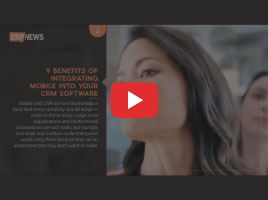While we’ve been inundated with predictions of industry trends these past few months, many manufacturers and producers are also reflecting on 2020—one of the most unpredictable years in history. The COVID-19 pandemic has been the defining event of the era and its impact will continue to be felt long into 2021.
Despite everything we’ve learned together through these turbulent times, there is so much more that the food and beverage (F&B) industry especially can glean from this year in order to make gains next year. Coronavirus may still be top of the news, but it doesn’t have a monopoly on the forces shaping consumer demand, changing the world of food, and informing the next steps for F&B businesses. Here are the top improvement initiatives all food businesses should be looking at in 2021 and beyond.

1- Prepare better for unusual demand patterns
If there’s one thing the pandemic has taught us so far, it’s the value of being agile as a food and beverage business. Those who were able to scale production up or down at the right time and to the correct degree had a big efficiency advantage.
There will continue to be a need for this and as we all get back to normal, demand will fluctuate and follow patterns that may seem unpredictable to the naked eye. This is especially important when it comes to food wastage—a significant problem for the industry at the best of times but one it’s even more vulnerable to at the moment.
Advanced forecasting methods and analytics tools will be more important than ever for demand planning, efficiency, and minimizing waste in the coming years.
2- Embrace flexibility
In 2020, F&B businesses were forced to completely upend their production schedules to cater to different sectors—often for the first time and at very short notice. Producers embraced the importance of pivoting to changes in demand by channel, for example, being able to shift portions, packaging, and labeling from food service to the grocery or retail consumers seamlessly.
While this was necessary for many to maintain some sort of trade when things were at their bleakest, it showed us the potential of many businesses to exploit new revenue streams quickly. Manufacturers are unlikely to want to pivot almost entirely from food service to retail or direct-to-consumer (as many were forced to) again, but the ability to capture a new market share when the opportunity presents itself is something all could benefit from.
3- Start taking sustainability seriously
In their recent report into trends shaping the food industry, global nutrition leaders ADM found 65% of customers actively want to have a positive effect on the environment through everyday activities. Being able to offer products that fit this brief should be a priority for all F&B manufacturers and producers. Businesses can respond in a number of ways, for instance:
- Agriculture: regenerative agriculture will help enrich the soil in the long-term and enhanced agriculture practices will improve crop yield per acre.
- Packaging: using renewable materials, or sometimes no materials at all, can negate the need for plastic.
- Processing: reduced waste, increased shelf life, and reduced give-away will result in more food from farm gate to table.
- Supply chain: improved flexibility and productivity will result in more food consumption with less waste and spoilage.
But there are so many other reasons why sustainable practices are needed right now. They will be crucial in the fight against climate change and world hunger and help give everyone in the global food and beverage industry an equitable stake. When it comes to making supply chains more agile and flexible the pandemic showed how this can benefit everyone in the supply chain, from the farm or plant to the table.
4- Consider expanding your nutritious product ranges
In November of this year, Aptean and Reuters Events co-authored a research report on food and beverage industry trends showing that food categories such as fresh produce, health foods, and meat and seafood will have the strongest growth over the next five years. With this in mind, one of the more striking changes taking place in food demand right now is one towards plant-based meat replacement, ranking as the fourth food category projected to have the strongest growth. Nestle also reported that 87% of people in the U.S. now include plant-based proteins in their diets.
Driven by a range of factors including concern for the environment, animal welfare, and personal health, consumers will increasingly be looking to the prepared food industry especially for new plant-based alternatives, fresh goods, and sustainably raised meat and seafood options. Advanced solutions like food-specific ERP are built to manage the introduction of new products and the costing, quality control, and inventory management concerns that come with them.
5- Workplace safety
With much of the world—especially North America and Europe—facing increased restrictions and lockdowns, the danger of COVID-19 outbreaks on food and beverage manufacturing sites grows again. By and large, manufacturers were able to prepare factory floors in the spring through rapid implementation of safety measures. Now is a good time to reinforce safety through physical distancing, improved sanitation, and altered production schedules. Technology like enterprise resource planning (ERP) and manufacturing execution systems (MES) can aid in tracking and protecting employee health to ensure businesses maintain their duty-of-care and can remain open and producing.
The Future
Despite the difficulties of 2020, the food and beverage industry is looking to 2021 with optimism. Even still, for businesses to move beyond the recovery phase and start thriving, they must keep looking for new advantages—the five initiatives we’ve discussed here are just a few of the options available. Aptean’s Global Food & Beverage Industry Trends Report offers further insight into the state of digital transformation in the F&B sector and what we’re likely to see in the coming years.
When looking to transform a food and beverage business for the better, industry-specific ERP can help by making systems more integrated, giving better insight from a wealth of data, and extending the core features of new technology to all users.




